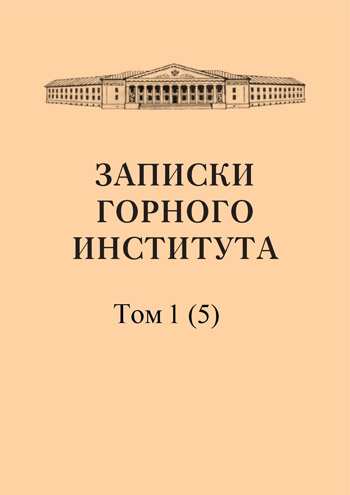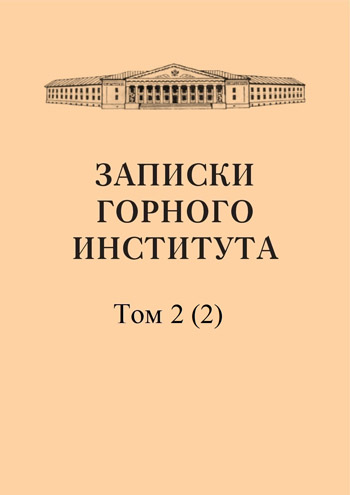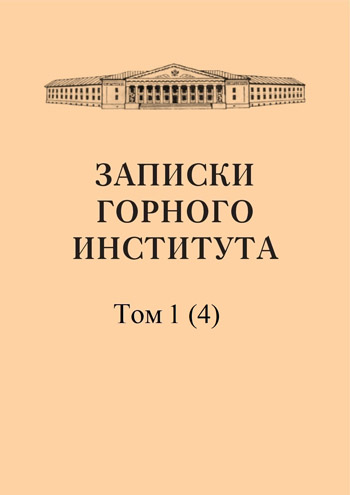-
Date submitted1908-07-07
-
Date accepted1908-08-27
-
Date published1908-12-25
Possibility of different geometric systems with one and the same complete set of elements
- Authors:
- Ye. S. Fedorov
We now know that geometric systems can be very numerous and varied, since very diverse geometric images can be taken as elements of systems. To establish any such system, it is necessary to determine the complete set of its elements and provide proof that from two elements arbitrarily taken from it it is possible to unambiguously compose an infinite set of them such that, by replacing the two taken in it with two arbitrary other elements included in its composition, we from them they would also unambiguously deduce the same set, which would constitute the linear principle of the system.
-
Date submitted1908-06-29
-
Date accepted1908-08-30
-
Date published1908-12-25
Crystallization of a ball from K2Cr2O7
- Authors:
- D. N. Artemyev
Experiments on the crystallization of a hemisphere with a diameter of 5 mm, prepared from a K2Cr2O7 crystal with a central plane (100), were generally carried out in exactly the same way as in the crystallization of hemispheres cut from sodium chloride, aluminum, and chrome alum.
-
Date submitted1908-07-02
-
Date accepted1908-08-26
-
Date published1908-12-25
The existence of a limitless variety of geometric systems
- Authors:
- Ye. S. Fedorov
The author concludes that there is an unlimited number of geometric systems of the same level, deduced from each given one. Since the conclusion about the possibility of reproducing from any given system another, twin one, is not limited by any conditions and is determined by the possibility of the same positional constructions as for all systems, it is clear that it is equally applicable to twin systems. In other words, we can reproduce a new, twin system not only from any geometric systems in general, but on absolutely the same grounds and from each twin system.
-
Date submitted1908-07-06
-
Date accepted1908-09-10
-
Date published1908-12-25
Essay on the iron ore deposits of the western part of central Russia and the Kingdom of Poland
- Authors:
- S. I. Charnotsky
The brown and spar iron ores of central Russia and the Kingdom of Poland are of, in addition to scientific, enormous practical interest, since they are almost the only iron ores in these two regions, which, due to their geographical location and other conditions, have all the data for a large iron industry developed here. The author describes ores in the following provinces: Tver province, Kaluga province, Oryol province (list of literature 1837 - 1902), Kursk province, Kingdom of Poland (literature from 1816 to 1903). The following is a description of the age and origin of the ores of the western part of Central Russia (provinces: Tula, Kaluga, Oryol, and Kursk).
-
Date submitted1908-07-02
-
Date accepted1908-09-20
-
Date published1908-12-25
Determination of the magnitude of birefringence
- Authors:
- V. V. Nikitin
The following issues are considered in the work: 1. Determination of the value of birefringence from readings with forward and reverse parallel positions of the compensator and the grain under study. 2. The degree of sensitivity of the rotating compensator, the Siedentopf compensator and the quartz and Fedorov mica compensators.
-
Date submitted1908-07-19
-
Date accepted1908-09-03
-
Date published1908-12-25
Traces of triclinic synthony in orthoclase
- Authors:
- Ye. S. Fedorov
Among the remarkable examples of potassium feldspar in the Museum of the Mining Institute there is a very large adularia quadruple from St. Gotthard (Fibia), reproduced in Fig. 1 of the attached table (up to two decimeters in length).
-
Date submitted1908-07-03
-
Date accepted1908-09-22
-
Date published1908-12-25
On the question of the origin of twinning stripes in microcline
- Authors:
- Ye. S. Fedorov
The author came across clear signs (Fig. 3) of the formation of stripes in the microcline in thin section from the shores of the White Sea (No. 8, that is, from Gorely Island in the Keretsky roadstead). I felt obliged to present such an image, perfectly clear at 120x magnification.
-
Date submitted1908-07-23
-
Date accepted1908-09-18
-
Date published1908-12-25
Linear primacy of curved surfaces of the 2nd order (conoseconds), determined by one of them and the plane
- Authors:
- Ye. S. Fedorov
Since the plane P is only a special case of a curved surface of the 2nd order (conosecond) K, then from this and some other conosecond, given completely arbitrarily, their linear primacy is quite unambiguously determined. Such will be the aggregate for the determination of which these data are sufficient and can be replaced by any two conoseconds of the same aggregate.
-
Date submitted1908-07-22
-
Date accepted1908-08-30
-
Date published1908-12-25
Shift of ordinary and polar lattices
- Authors:
- Ye. S. Fedorov
Correlativity is established not only between a system of points and a system of planes, but also between transformations of these systems. It is precisely because of correlativity that this theorem has a dual meaning, so that in its formulation an ordinary lattice can be replaced by a polar one and vice versa. The author considers it necessary to publish this theorem in view of the fact that in crystallography, to determine the symbol of a complex, we precisely perform the operation of shifting the polar lattice (using the gnomosteographic projection), while the essence of the change that the ordinary lattice undergoes in this case remained unknown.
-
Date submitted1908-07-18
-
Date accepted1908-09-10
-
Date published1908-12-25
Experiments on crystallization between two spheres
- Authors:
- Ye. S. Fedorov
I began experiments of this kind back in 1901, when I cut out circles or small rings on thin sections of rock salt and alum that separated the inner convex from the outer concave spherical line; I put a drop of an unsaturated solution into this annular space and covered it with a coverslip, which I sealed with Canada balsam.


